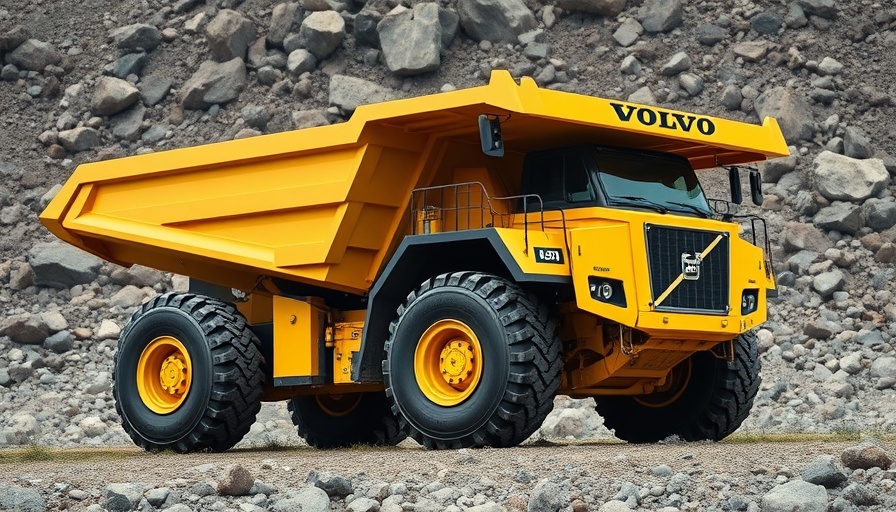
A Significant Leap: Volvo's A50 Articulated Dump Truck
Volvo has once again demonstrated its commitment to innovation and efficiency with the launch of the A50 articulated dump truck. This new model not only replaces the older A45G FS but opens a new chapter in Volvo's journey, introducing a completely redesigned and upgraded solution for construction and heavy equipment contractors. With substantial enhancements in fuel efficiency, operator comfort, and advanced technology, the A50 aims to revolutionize how heavy hauling operates on job sites.
Enhanced Operator Comfort and Technology
One of the most remarkable features of the A50 is its completely redesigned cab, which prioritizes operator comfort and functionality. The larger floor area, reduced noise levels, and new hanging pedals make for a much more enjoyable work environment. The premium seat adjusts based on the operator’s weight and offers both heating and air conditioning, ensuring that operators can focus on their tasks without distractions from discomfort.
The A50 also integrates cutting-edge technology. The Volvo Co-Pilot touchscreen provides comprehensive visibility through standard and optional cameras, enhancing situational awareness. Features such as Haul Assist give operators real-time payload data, thereby preventing overloading and minimizing the risk of equipment wear. This tech-savvy approach not only aids in productivity but also contributes to overall fuel savings — a critical factor for contractors managing tight budgets.
Lower Emissions for Sustainable Construction
In an era where sustainability is key, the Volvo A50 is built with low-carbon steel and designed to be adaptable for future drivetrain technologies. This forward-thinking design allows for the integration of more eco-friendly power sources, potentially paving the way for electric or hybrid options in the future. Contractors keen on maintaining sustainable practices will find this aspect of the A50 particularly appealing as it reduces overall environmental impact while maintaining high performance.
Future Opportunities and Competitive Edge
As the construction industry continues to evolve, so too do the tools and equipment needed to stay ahead. With the A50, Volvo isn't just showcasing a new model; it is setting the stage for future innovations in the sector. The incorporation of cloud-based services like Connected Map provides a visual overview of all machines on-site, connecting the operators and office staff in ways that enhance communication and workflow. This type of integration is essential for contractor efficiency and underscores Volvo's commitment to streamlining operations.
Real-World Testing and Feedback
The unveiling at the World of Asphalt provided an excellent opportunity for live demonstrations, allowing operators and industry professionals to evaluate the A50 firsthand. Feedback from these sessions indicates strong approval for the truck's mixture of technology and comfort, as professionals noted the seamless operation with the new systems and appreciated the comfortable cab. Real-world testing remains critical; capturing user experiences helps further refine the product and demonstrates Volvo's adaptability to customer needs.
The Takeaway: Is the A50 the Right Fit for Your Operation?
For contractors considering an upgrade to their fleet, the Volvo A50 articulating dump truck represents a significant investment in both technology and comfort. Its advanced features and sustainable construction align with the current trends in the industry, offering a comprehensive solution that can enhance productivity while minimizing environmental impact. Ultimately, the decision to adopt new equipment should focus on how it can meet specific operational needs and improve efficiency.
To unlock the full potential of your construction operations, considering the A50 is crucial. As these innovations shape the future of the industry, proactive adoption could mean gaining a competitive edge in your market.
 Add Row
Add Row  Add
Add 




Write A Comment